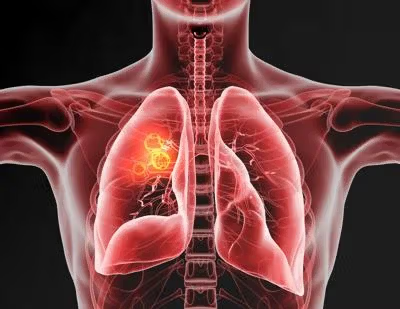News
Article
Dato-DXd Led To Antitumor Activity in Some Patients With Pretreated NSCLC
Author(s):
Datopotamab deruxtecan elicited encouraging responses in patients with heavily pretreated non–small cell lung cancer harboring actionable genomic alterations.

Datopotamab deruxtecan (Dato-DXd) elicited encouraging responses in patients with heavily pretreated non-small cell lung cancer (NSCLC) harboring actionable genomic alterations, according to findings from the phase 2 TROPION-Lung05 trial presented at the 2023 ESMO Congress.
The Trop2-directed antibody-drug conjugate (ADC) elicited a confirmed objective response rate (cORR; patients whose disease was confirmed to respond partially or completely to treatment) of 35.8% in 137 treated patients, with 3% of patients achieving a complete response and 33% experiencing a partial response.
The median duration of response (DOR; the time from when a patient initially responds to treatment until disease progression or death) was 7 months, the confirmed disease control rate (DCR; patients whose disease shrunk, disappeared or stabilized) was 78.8% and the median progression-free survival (PFS; how long a patient lives without their disease progressing or becoming worse) was 5.4 months.
In the subset of 78 patients harboring EGFR mutations, the cORR was slightly higher, at 43.6%. The median DOR in this group was also 7 months and the confirmed DCR was 82.1%. The median PFS was also slightly higher, at 5.8 months. In those with a sensitizing or T790M mutation who had previously received Tagrisso (osimertinib, 68 patients), the ORR with the ADC was 49.1%.
In the group of 34 patients with ALK rearrangements, the cORR was lower, at 23.5%. The median DOR was seven months and the confirmed DCR was 73.5%. The median PFS for this subset was 4.3 months. Notably, these patients were more heavily pretreated, with a median of four prior lines of therapy received, and they also had more liver metastases, Dr. Luis Paz-Ares of the Hospital Universitario in Madrid, Spain, said in a presentation of the data.
“(Overall,) Dato-DXd is an active ADC for heavily pretreated patients with NSCLC with genomic alterations, including EGFR mutations and ALK rearrangements,” Paz-Arez said. “The safety profile was consistent with what has previously been described, with no new signals (observed).”
Dato-DXd is comprised of a human anti-TROP2 IgG1 monoclonal antibody covalently linked to a highly potent topoisomerase 1 inhibitor payload through a plasma-stable, tumor-selective, tetrapeptide-based cleavable linker. Previously, the ADC was found to have antitumor activity with a manageable toxicity profile in heavily pretreated patients with advanced NSCLC enrolled in the phase 1 TROPION-PanTumor01 trial. In the group of patients who received the ADC at 6 mg/kg every 3 weeks, the cORR was 26%, the median DOR was 10.5 months, the DCR rate was 70% and the median PFS was 6.9 months.
The single-arm TROPION-Lung05 study enrolled patients with stage 3B, 3C, or 4 NSCLC who had an ECOG performance status of 0 or 1 (meaning they can perform daily tasks with little or no help) and at least one actionable genomic alteration such as EGFR, ALK, ROS1, NTRK, BRAF, MET exon 14 skipping or RET.
Patients must have received at least one line of targeted therapy and one or two cytotoxic agent–containing regimens, including platinum-based therapy in the metastatic setting. They also needed to have experienced radiographic disease progression following targeted treatment.
In the total study population, the median patient age was 60 years. More than half of the patients were female (61%) and most had adenocarcinoma (95%). Fifty-one percent of patients had a history of brain metastases. The median number of prior lines of therapy received for advanced or metastatic disease was three. All patients previously received treatment, with 72% having received at least three lines, 36% having received anti-PD-1/PD-L1 agents and 60% having received at least two lines of targeted therapies for their indicated alteration. All patients had prior exposure to platinum-based chemotherapy.
Regarding genomic alterations, 57% had EGFR mutations, 25% had ALK rearrangements, 7% had ROS1 rearrangements, 6% had RET rearrangements, 4% had MET exon 14 skipping mutations and 3% had BRAF mutations.
At the time of the data cutoff date of Dec. 14, 2022, the median treatment duration with the ADC was four months, 44% of patients were still on the study and 15% were still receiving treatment with Dato-DXd.
Treatment-emergent side effects occurred in all patients, with 47% of side effects being grade 3 or higher. Treatment-related side effects occurred in 94% of patients, with 29% experiencing side effects that are grade 3 or higher. Serious side effects were observed in 25% of patients with 5% being grade 3 or higher.
The most common side effects experienced by at least 15% of patients included nausea (grade 1, 35%; grade 2, 23%; grade 3 or higher, 2%), stomatitis, or swelling and sores inside the mouth (29%; 20%; 10%), alopecia (36%; 16%; 0%), constipation (23%; 9%; 0%), reduced appetite (12%; 12%; 4%), fatigue (12%; 10%; 4%), vomiting (14%; 8%; 1%), anemia (4%; 5%; 6%), asthenia, or weakness (7%; 7%; 2%), COVID-19 (10%; 5%; 1%), rash (12%; 4%; 0%) and cough (10%; 4%; 0%).
Treatment-emergent side effects led to dose reduction, treatment withdrawal or death for 22%, 10% and 2% of patients, respectively.
Side effects of special interest included oral mucositis (66%), ocular surface toxicity (26%), infusion-related reaction (16%) and adjudicated drug-related interstitial lung disease (4%).
In the ongoing phase 3 TROPION-Lung01 study, investigators are evaluating the safety and efficacy of Dato-DXd compared with docetaxel in patients with pretreated advanced or metastatic NSCLC, including those harboring genomic alterations.
Data from this trial were also presented at the 2023 ESMO Congress and showed that Dato-DXd resulted in a median PFS of 4.4 months versus 3.7 months with docetaxel. In the investigative and control arms, the ORRs were 26.4% and 12.8%, respectively. The median DORs were 7.1 months and 5.6 months, respectively.
For more news on cancer updates, research and education, don’t forget to subscribe to CURE®’s newsletters here.




